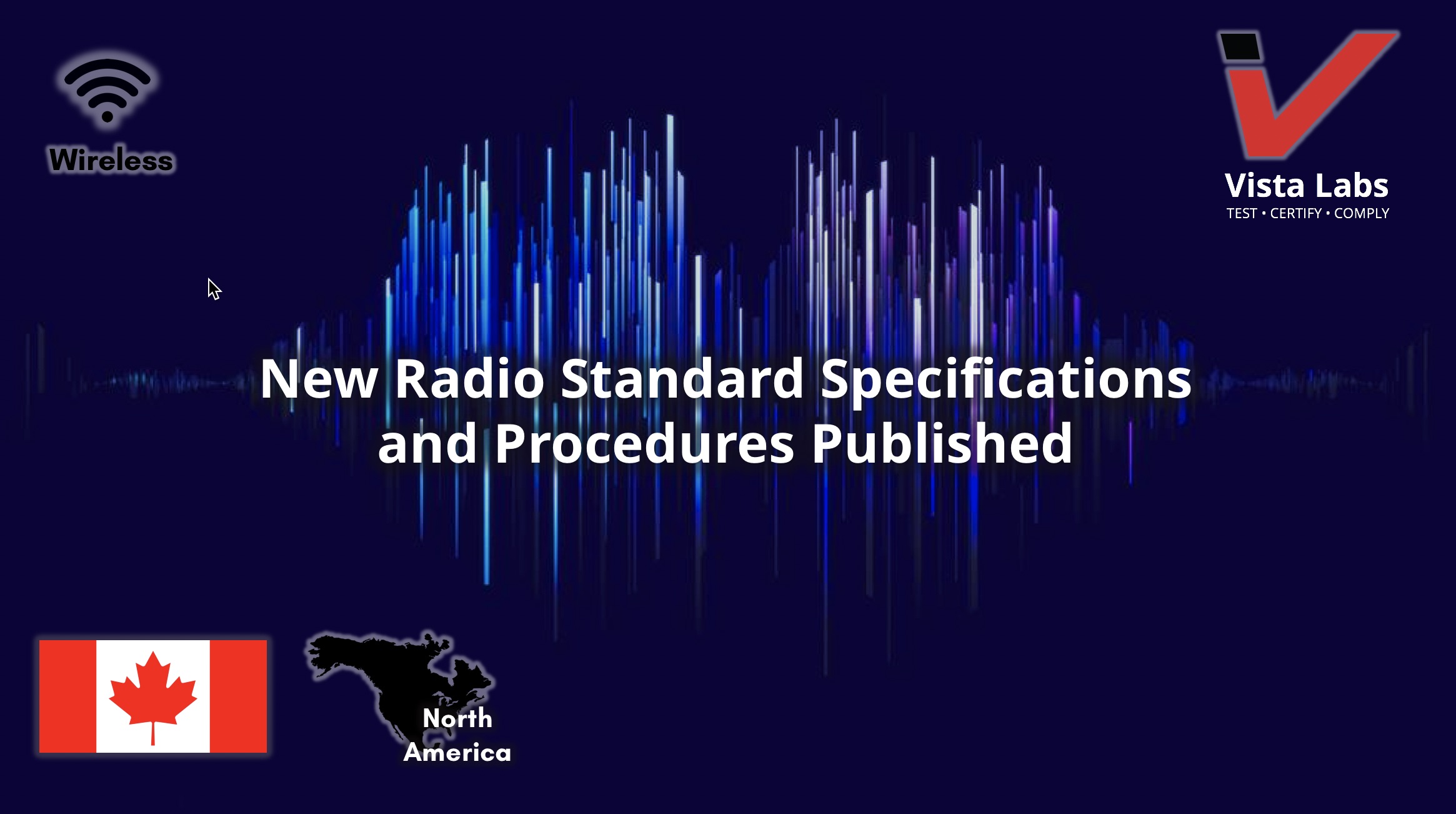The Department of Innovation, Science and Economic Development (ISED) of Canada publishes standards for wireless microphones, maritime service, and broadcasting equipment.
Notice is provided that the following standards have been published:
- Radio Standards Specification RSS-123, issue 4, Licensed Wireless Microphones, which sets out the certification requirements for wireless microphones operating in specific frequency bands.
- Radio Standards Specification RSS-181, issue 2, Coast and Ship Station Equipment Operating in the Maritime Service in the Frequency Range 1605-28000 kHz, which sets out certification requirements for equipment operating in the maritime service in the frequency range 1605-28000 kHz.
- Radio Standards Procedure RSP-100, issue 12, Certification of Radio Apparatus and Broadcasting Equipment, which sets out the requirements and process for obtaining and maintaining certification of Category I equipment subject to Radio Standards Specifications (RSSs) or Broadcasting Equipment Technical Standards (BETSs).
The following are the main changes:
RSS-123
- Added frequency bands 941.5-952 MHz, 953-959.85 MHz, 6930-6955 MHz and 7100-7125 MHz and their requirements for wireless microphones.
- Modified the emission mask for devices operating in the frequency bands 26.1-26.480 MHz, 88-107.5 MHz, 450-451 MHz and 455-456 MHz.
- Removed receiver spurious emission limits since this requirement is included in RSS-Gen, General Requirements for Compliance of Radio Apparatus.
RSS-181
- Modernized to reflect the current Radio Standards Specification (RSS) structure.
- Permits equipment employing modulation other than amplitude modulation, single sideband (AM-SSB).
- For shipborne equipment, covers only equipment that is not a global maritime distress and safety system (non-GMDSS).
- States requirement that RSS-Gen, General Requirements for Compliance of Radio Apparatus must be used in conjunction with this RSS.
- Removed equipment categories (L, C, V and Y) according to power and type.
- Removed performance requirements on receivers as these are now covered in international standards that are governed by Transport Canada.
- Removed requirement for minimum standards under environmental conditions as these are now covered in international standards that are governed by Transport Canada.
- Removed the section on receiver spurious emission as this is covered in RSS-Gen.
- Updated requirements related to spectrum management (frequency stability, transmitter unwanted emissions, power, etc.).
RSP-100
- Removed information and requirements included in RSS-Gen, General Requirements for Compliance of Radio Apparatus.
- Clarified that for handheld host devices, host certification (not modular certification) is required, unless conditions for exemption are met (section 8.2).
- Modified that the product marketing name (PMN) is required at the time of certification and added information on temporary non-disclosure of the PMN (section 9).
- Added certification requirements for stand-alone certified modules incorporated into a handheld or wearable host product (section 10.1).
- Added the requirement that a statement of compliance to the latest issue of the applicable standard(s) be provided with certification services applications for new products or product modifications when new testing to verify compliance is not needed (section 11).
- Added non-RF modifications to Class I permissive changes (C1PC) (section 11.1)
- Clarified that for a new multiple listing service application from an existing certification, the new hardware version identification number (HVIN) must be different than the one from the existing certification under the same applicant (section 11.5.1 b).
- Updated the definition section and ISED contact information.
- Restructured and reformatted the document.
These documents will come into force upon their publication on the Official publications section of the Spectrum Management and Telecommunications website.



